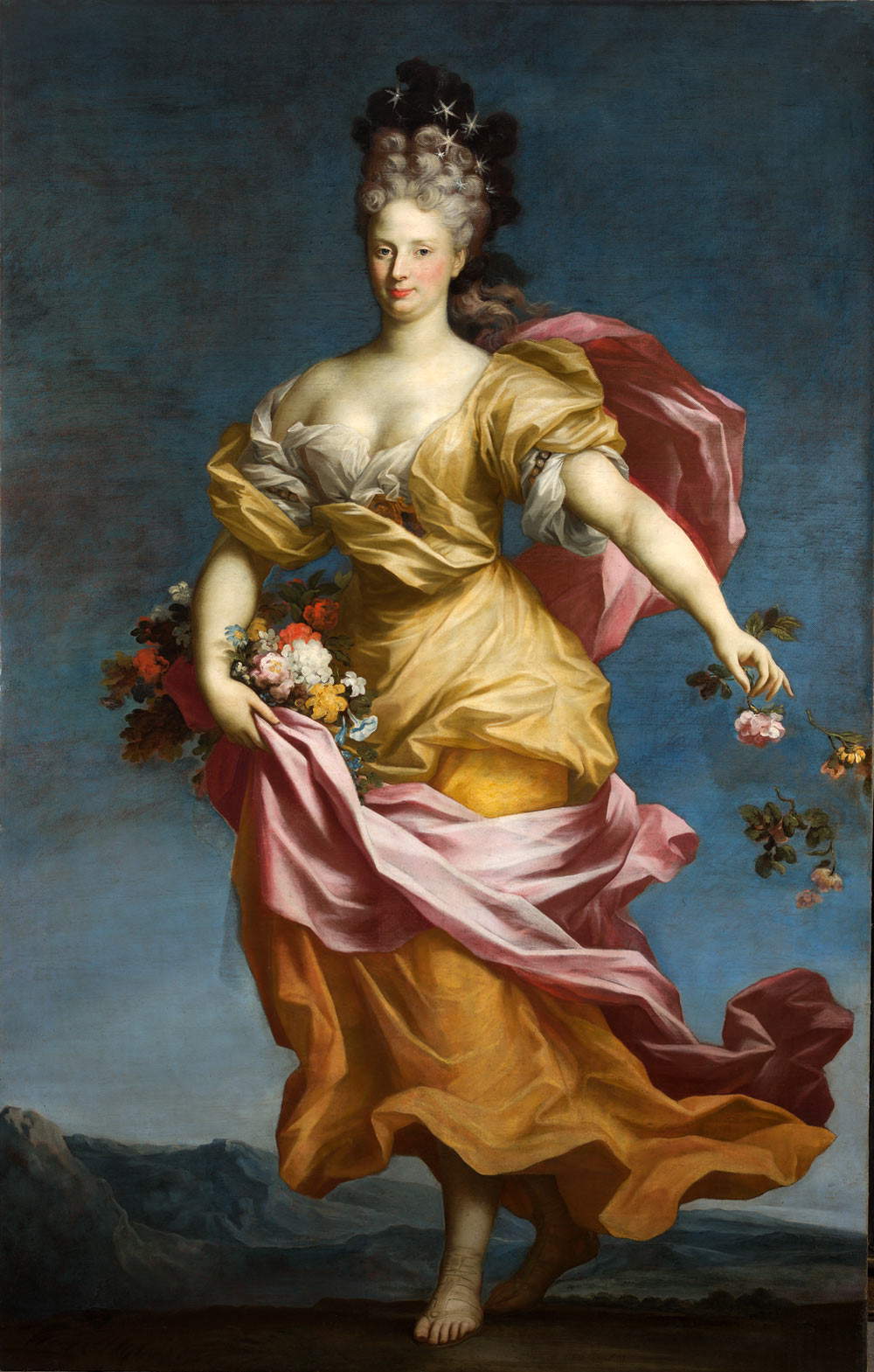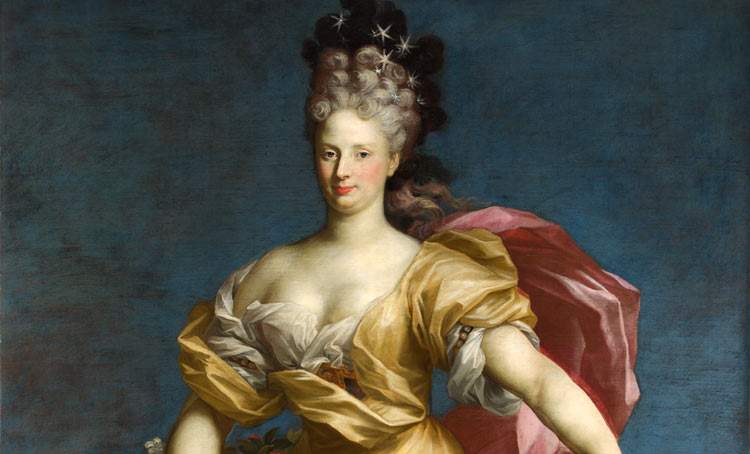From April 13 to July 31, 2022, Palazzo Nicolosio Lomellino in Genoa is hosting the exhibition Domenico Parodi. Arcadia in the Garden, as part of the project Superbarocco. The protagonists: the exhibition recounts the Baroque artist Domenico Parodi (Genoa, 1672 - 1742) told through his precious interventions in the Palace. From the Nymphaeum, to the upper garden, the frescoes on the second piano nobile, and other works created during his nearly half-century of intense activity as a designer, portraitist and fresco painter. Promoted by the Associazione Palazzo Lomellino di Strada Nuova Onlus and curated by Daniele Sanguineti and Laura Stagno with the technical collaboration of Valentina Borniotto, the exhibition offers a tour through all the palace’s visitable spaces. A designer, portraitist and fresco painter, Parodi is celebrated with an itinerary that winds its way through the exterior and interior spaces, by means of twenty works immersed in a scenographic setting conceived by Guido Fiorato, director of the Accademia Ligustica di Belle Arti, and a special focus on the design of the Nymphaeum and the hanging garden.
The exhibition delves into Domenico Parodi’s intervention inside Palazzo Lomellino di Strada Nuova as a multifaceted artist up-to-date with the most fashionable trends of the eighteenth century, such as the one linked to the myth ofArcadia, which made man’s interaction with nature its focal point. In fact, the itinerary starts from the inner courtyard, passes through the much-admired Nymphaeum to climb up to the scenographic “secret garden” (both designed for the Pallavicini family in the early eighteenth century) and finally arrives at the rooms on the first piano nobile, where eighteen works including paintings, preparatory drawings and installations always related to the theme of Nature will be exhibited. The exhibition part presents a collection of designs for grottoes, fountains and outdoor statues, also made by Parodi for other commissions, as well as some portraits of the Genoese aristocracy: of particular note is the portrait of Paola Lomellini Adorno depicted in the guise of Flora interacting with Nature and the preparatory drawing for the fresco in the room of Bacchus and Ariadne on the second piano nobile. Among the works is Domenico Parodi’s self-portrait on loan from the Uffizi Gallery.
As part of the eighteenth-century phase of updating Palazzo Lomellino, commissioned by the Pallavicino family, which had resided in the Strada Nuova mansion since 1711, Domenico Parodi, son of the famous sculptor Filippo, obtained a majority role. In addition to the creation of several frescoes with mythological subjects, in the halls of the second piano nobile, the artist was particularly involved in the arrangement of the gardens and the conception of the scenographic nymphaeum, put in place with his pupil Francesco Biggi. Consistent with the new “boschereccio” taste of the mid-eighteenth century, Domenico Parodi specialized in apparatuses of strong scenic impact, capable of involving interiors and exteriors at the same time and simulating naturalistic elements (such as caves, limestone concretions, etc.) in the dimension of the wall. A typical example of this is the solution created by the artist for Pino Sottano’s Villa Durazzo, the reproduction of which, animated by direct interaction with the visitor, opens the path in the rooms of the first piano nobile. Reflecting on the centrality of Domenico Parodi’s role for Genoese, national and international patrons (as in the case of the statues for the Belvedere in Vienna, commissioned by Eugene of Savoy), the exhibition aims to exemplify his production, with a specific focus on the garden dimension, through the presentation of design apparatus for grottoes, fountains and outdoor statues. Updated with the innovations that came from the French court, Parodi was also one of the most active portraitists of the Genoese aristocracy: to the theme of portraiture, especially female portraiture, a section of the exhibition will therefore be devoted, culminating with the beautiful Paola Lomellini Adorno, depicted in the guise of Flora (Greek goddess of flowering and commonly recognized as an allegory of Spring), placed at the center of a specially designed display that contextualizes her in her era.
Again, thanks to the collaboration with the Ligustica Academy of Fine Arts and the curatorship of Guido Fiorato, the exhibition is further embellished by a series of immersive installations that aim to encourage the direct involvement of the viewer and creating a visual continuity between exteriors and interiors. In addition, with students from the Materials Technology - Scenography course, educational workshops will be organized for schools. The Palazzo Lomellino Association then wishes to contribute to the process of raising awareness and attention to the issue of eco-sustainability, which is why it wanted to create a “green” exhibition design that, thanks in part to the sensitivity of the Curators, Suppliers and Supporting Companies, using natural, recyclable materials and low-consumption energy. Finally, to complete the itinerary, a collection of works by the seventeen Italian and international architectural firms that were invited to reflect, through critical and visionary elaborations, on the lost continuity of the nymphaeum due to the disappearance of the statue of Phaeton, which dominated the entire sculptural group, can be seen in the courtyard. The idea, born on the occasion of the call The Statue and the Nymphaeum carried out in 2019 by the Caarpa (Casana Architettura Paesaggio) studio as part of OPEN open studios, is the first part of a larger project dedicated to the nymphaeum of the Palace and contributes to the creation of an unprecedented backdrop for the courtyard.

“We are happy to participate in this important cultural initiative involving the city, aware that we are making a truly original contribution,” says Matteo Bruzzo, owner of the Palazzo and president of the Associazione Palazzo Lomellino di Strada Nuova Onlus. “Palazzo Lomellino in this context is not only an exhibition space, but a direct protagonist of the Baroque, thanks precisely to the role played by Domenico Parodi in the transformations of the early 18th century. In addition to the splendid frescoes on the second piano nobile, it is in fact his designs for the Nymphaeum and the secret garden that make our spaces unique and fascinating.”
“Domenico Parodi’s expressive potential,” explains curator Daniele Sanguineti, “derives from the tradition of origin-his father, Filippo, was the major Bernini sculptor active in Genoa; his father-in-law, Pellegro Olivari, an esteemed wood sculptor; and his godfather, Domenico Piola, had monopolized the arts in the second half of the seventeenth century. Parodi inherited an established sculpture workshop, but he was a painter and managed to provide statues and apparatuses by designing them and using collaborators to execute them, notably Francesco Biggi, his father’s former pupil. Carlo and Stefano Pallavicini, who from 1711 became the owners of the palace erected in Strada Nuova by Nicolosio Lomellino, adapted the courtyard, upper garden and the second piano nobile to the new requirements of comfort and decoration, asking Parodi for a score based on classical myths that were projected from the interior into the external space. The exhibition recounts this specific moment and enhances the so eclectic role of this multifaceted artist.”
“The profile of Domenico, whose rare sublime ingenuity is emphasized by contemporary sources,” stresses curator Laura Stagno, “was that of an educated, literate arist who distinguished himself by constructing complex iconographic inventions. The taste and experience of this versatile protagonist of the arts of the early eighteenth century welded on several levels - on the level of images, but also of concrete relationships with people - with the culture of Arcadia, which was at that time asserting itself on the Genoese scene (the Ligustian Colony was founded in 1705). This new sensibility, shared with his most up-to-date patrons, is expressed in the centrality given to nature as a place of myth, to which are linked the novelties of the ”woodland“ theme and the evocation of the cave environment introduced widely in the interiors. Organized within the mansion that preserves the most important example of Parodi’s contextual intervention as a fresco painter and as the director of the garden arrangement, the exhibition offers the public significant examples of his erudite talent.”
The exhibition opens Tuesday through Friday from 3 to 6 p.m., Saturdays, Sundays and holidays from 10 a.m. to 6 p.m. Monday closed. Tickets: full 10 euros, concessions (COOP members, FAI, TCI, GIANO Cultural Association, students and teachers, Euroflora 2022 ticket holders and ticket holders of the other Superbarocco project venues) 8 euros, students/teachers 6 euros. Reservations required for groups and school groups. Info at 3938246228, www.palazzolomellino.org.
Domenico Parodi. Arcadia in the Garden is promoted by the non-profit Palazzo Lomellino di Strada Nuova Association and organized in partnership with the Accademia Ligustica di Belle Arti. It has obtained the patronage and support of: Genoa City Council, Liguria Region, Western Ligurian Sea Port System Authority, Genoa Chamber of Commerce, Compagnia di San Paolo, FAI - Genoa Delegation, Carige Foundation and University of Genoa (DIRAAS). Also contributing were: Aon S.p.A, Bartolomeo Boero S.p.A, Cambi Casa d’Aste, Costa Edutainment S.p.A, Consorzio Tutela del GAVI, Bruschettini Foundation for Islamic and Asian Art, Grimaldi Holding S.p.A, SAAR Depositi Portuali S.p.A. The exhibition is a partner event of Euroflora 2022.
 |
| Genoa, Palazzo Nicolosio Lomellino hosts exhibition on Domenico Parodi |
Warning: the translation into English of the original Italian article was created using automatic tools. We undertake to review all articles, but we do not guarantee the total absence of inaccuracies in the translation due to the program. You can find the original by clicking on the ITA button. If you find any mistake,please contact us.